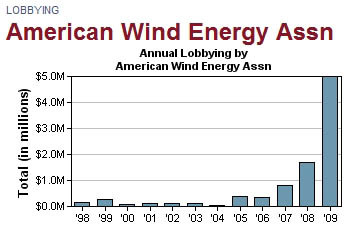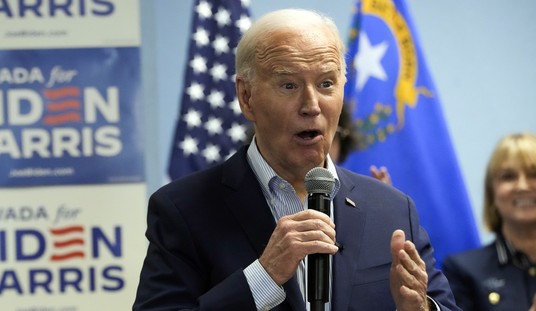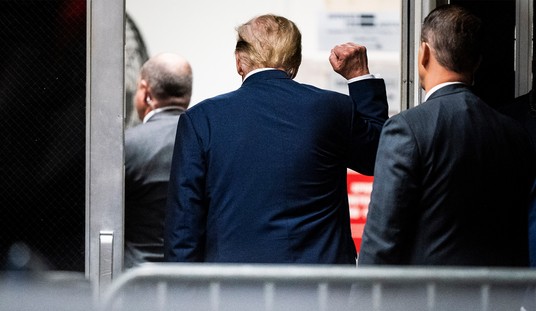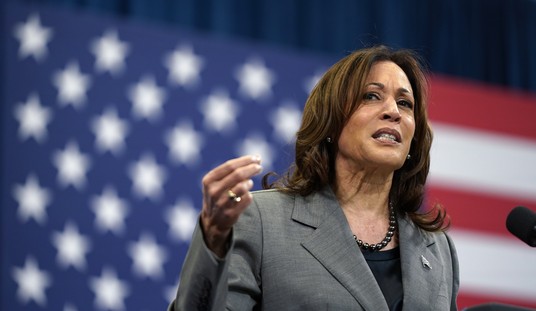Wind energy, the crown jewel of President Obama’s green revolution, seems to be encountering a stiff headwind of its own. As we shall see, wind energy is a highly inefficient technology for reliable power generation. The industry which supports it depends entirely on direct tax credits and federally-mandated consumption for its profitability.
This week in wind energy news:
- Wind farms exposed as a threat to homeland security
- Wind subsidies dwarf those for conventional energy sources
- Not coincidentally, wind energy lobbying expenditures grow by leaps and bounds
1. Wind Turbine Projects Run Into Resistance (New York Times, 8/26/10)
BARSTOW, Calif. — The United States military has found a new menace hiding here in the vast emptiness of the Mojave Desert in California: .
Moving turbine blades can be indistinguishable from airplanes on many radar systems, and they can even cause blackout zones in which planes disappear from radar entirely. Clusters of wind turbines, which can reach as high as 400 feet, look very similar to storm activity on weather radar, making it harder for air traffic controllers to give accurate weather information to pilots. …
In 2009, about 9,000 megawatts of proposed wind projects were abandoned or delayed because of radar concerns raised by the military and the Federal Aviation Administration, according to a member survey by the American Wind Energy Association. That is nearly as much as the amount of wind capacity that was actually built in the same year, the trade group says. [emphasis added]
So we’ve got the Pentagon working at cross purposes with the Department of Energy. Great. At least we have a Hummer that runs on vegetable oil, thanks to the Pentagon’s biofuels initiative.
The fact is, wind farms seem like a real cool idea, until you deal with the practicalities of permitting, installing and maintaining them.
2. Wind Power Won’t Cool Down the Planet (WSJ 8/23/10 – link may require subscription; or, just Google a few words of the quoted text below to find the full article)
The wind industry has achieved remarkable growth largely due to the claim that it will provide major reductions in carbon dioxide emissions. There’s just one problem: It’s not true. A slew of recent studies show that wind-generated electricity likely won’t result in any reduction in carbon emissions—or that they’ll be so small as to be almost meaningless. …
Because wind blows intermittently, electric utilities must either keep their conventional power plants running all the time to make sure the lights don’t go dark, or continually ramp up and down the output from conventional coal- or gas-fired generators (called “cycling”). But coal-fired and gas-fired generators are designed to run continuously, and if they don’t, fuel consumption and emissions generally increase. A car analogy helps explain: An automobile that operates at a constant speed—say, 55 miles per hour—will have better fuel efficiency, and emit less pollution per mile traveled, than one that is stuck in stop-and-go traffic.
Despite its inefficiencies, Congress can’t help themselves when it comes to throwing money at the cute little windfarms.
Meanwhile, the wind industry is pocketing subsidies that dwarf those garnered by the oil and gas sector. The federal government provides a production tax credit of $0.022 for each kilowatt-hour of electricity produced by wind. That amounts to $6.44 per million BTU of energy produced. [As a point of comparison, the wellhead price of natural gas is currently in the neighborhood of $4.00 per million BTU. – ed.] In 2008, however, the EIA reported subsidies to oil and gas totaled $1.9 billion per year, or about $0.03 per million BTU of energy produced. Wind subsidies are more than 200 times as great as those given to oil and gas on the basis of per-unit-of-energy produced.
Perhaps it comes down to what Kevin Forbes, the director of the Center for the Study of Energy and Environmental Stewardship at Catholic University, told me: “Wind energy gives people a nice warm fuzzy feeling that we’re taking action on climate change.” Yet when it comes to CO2 emissions, “the reality is that it’s not doing much of anything.”
In other words, the concept “as free as the wind” does not apply in the business of power generation. We’ve come to expect our power grid to deliver energy on demand. Brownouts and blackouts frustrate consumers. Since wind energy requires a conventional backup, it is redundant, inefficient and expensive.
3. Solar, Wind Power Groups Becoming Prominent Washington Lobbying Forces After Years of Relative Obscurity (OpenSecrets blog, 8/25/10)
By 2007, the alternative energy industry had begun to drastically increase its lobbying spending, almost doubling its expenditures from the previous year. In 2009, alternative energy organizations shelled out an unprecedented $30 million to protect and promote their interests on Capitol Hill, and this year, it’s on pace to equal that record output.
The alternative energy industry’s lobbying expenditures have grown to 12 times from its 1998 level. In comparison, oil and gas spending and mining spending have grown less than three times their 1998 amount, and electric utility spending has grown to just twice its 1998 amount.
Leading the way is the American Wind Energy Association, which has been aggressively recruiting wind energy investors and their suppliers. [One of the directors of AWEA is Thomas S. Carnahan, brother of Rep. Russ Carnahan (D-MO) and Robin Carnahan, (D Cand Sen-MO).]

The recent involvement of AWEA in federal affairs, [AWEA spokeswoman Christine Real de Azua] said, “reflects the urgency of the industry’s number one priority — passing a national renewable electricity standard with aggressive, binding near- and long-term targets, as part of comprehensive energy and climate legislation.”
[Real de Azua] cites “market certainty” as a concern of AWEA’s members, who need legislative support of their industry “in order to expand their operations and invest in new manufacturing as well as new wind farm facilities.” She added that it is imperative to the members of AWEA that the U.S. government “steps up and clearly commits to developing renewable energy.”
So, not only are the renewable energy folks completely dependent on the constant infusion of tax credit dollars to help their economics approach parity with conventional sources, they readily admit that their top priority is securing government-mandated demand.
It’s especially ironic that they use the term “market certainty”. Markets are made up of two sides, supply and demand, each seeking balance with the other. As we saw in Item #1 above, wind can’t offer anything approaching “supply certainty”, so they look to Congress to artificially create “demand certainty”.
Cross-posted at VladEnBlog.














Join the conversation as a VIP Member